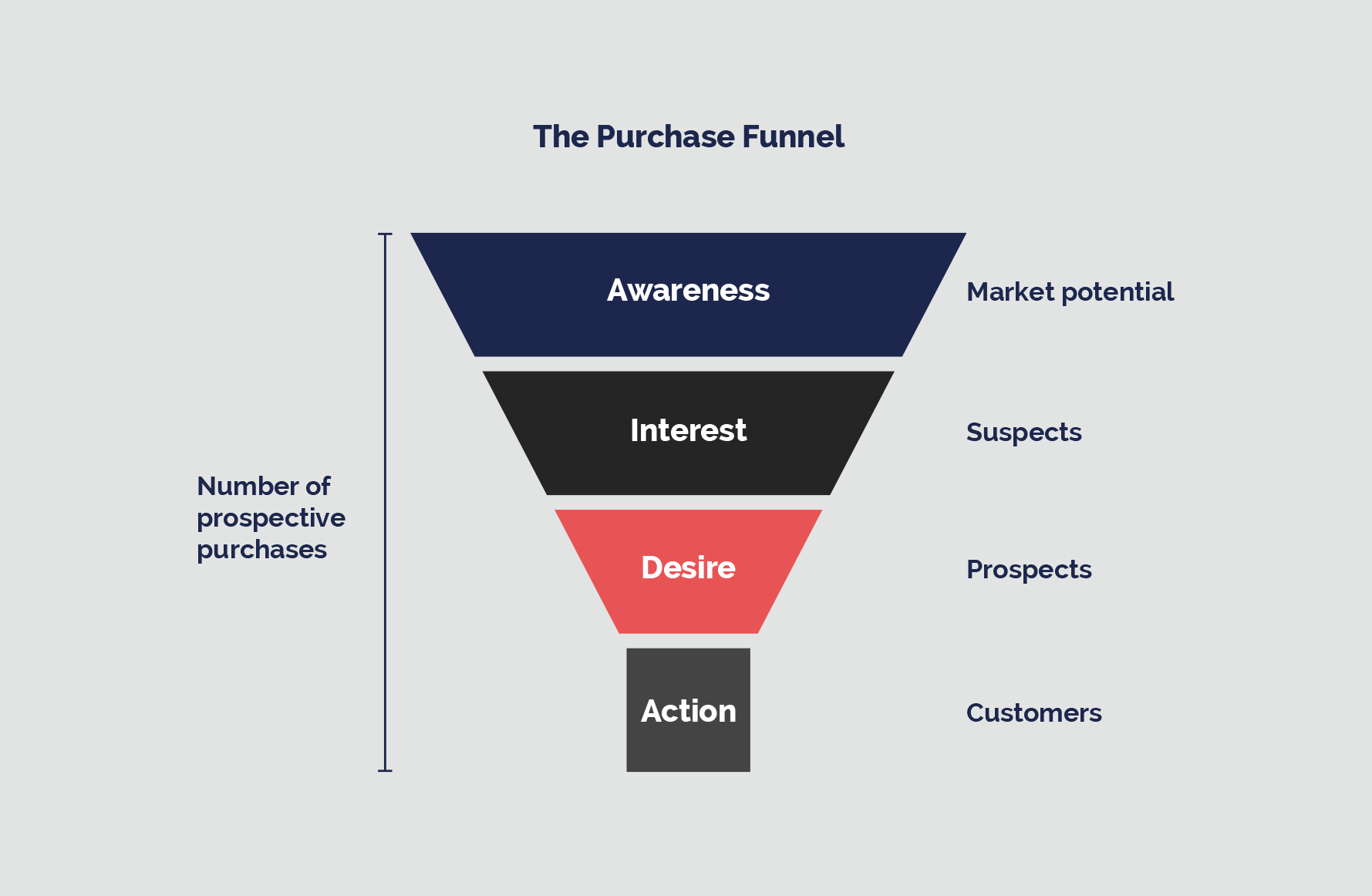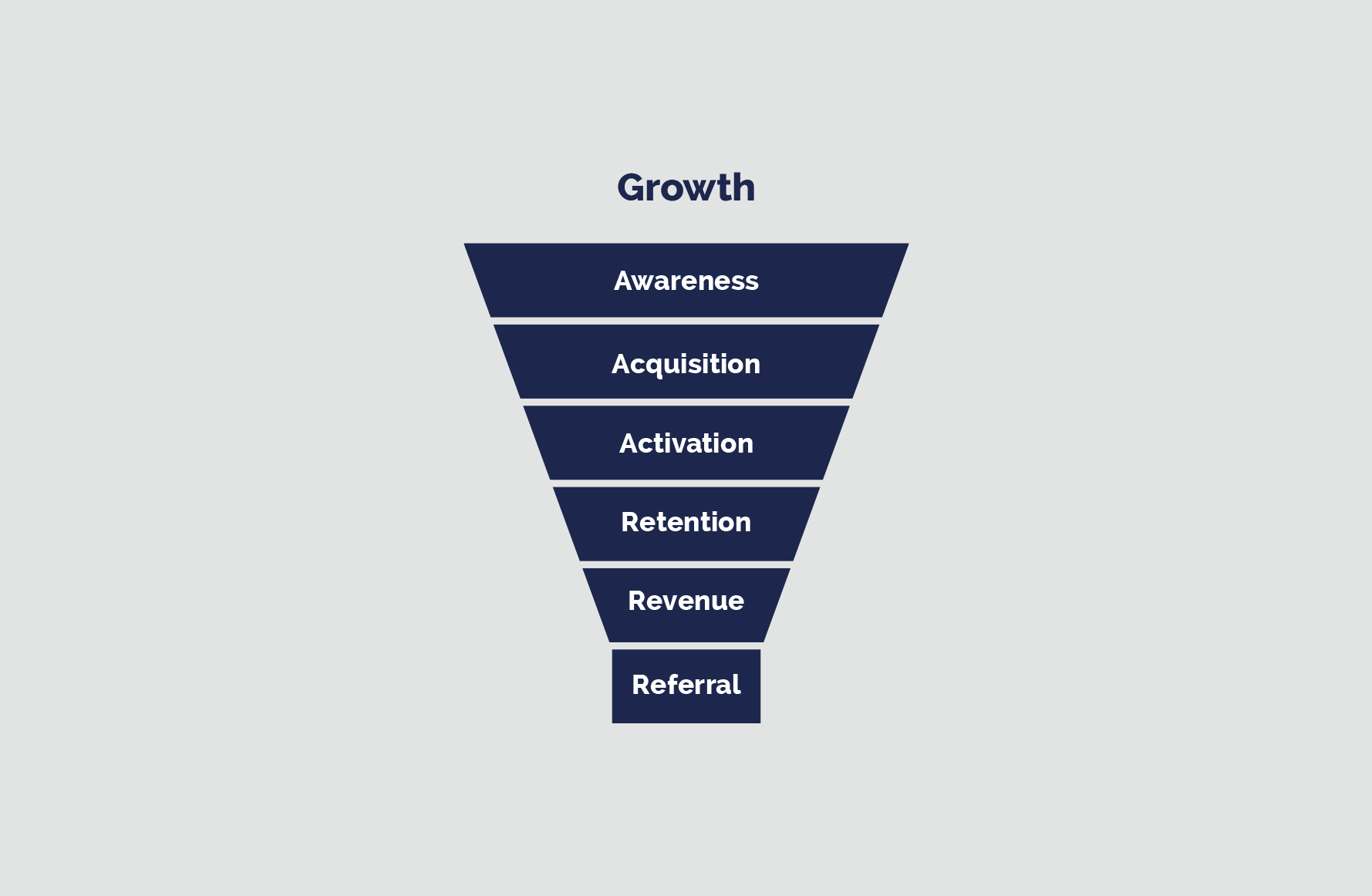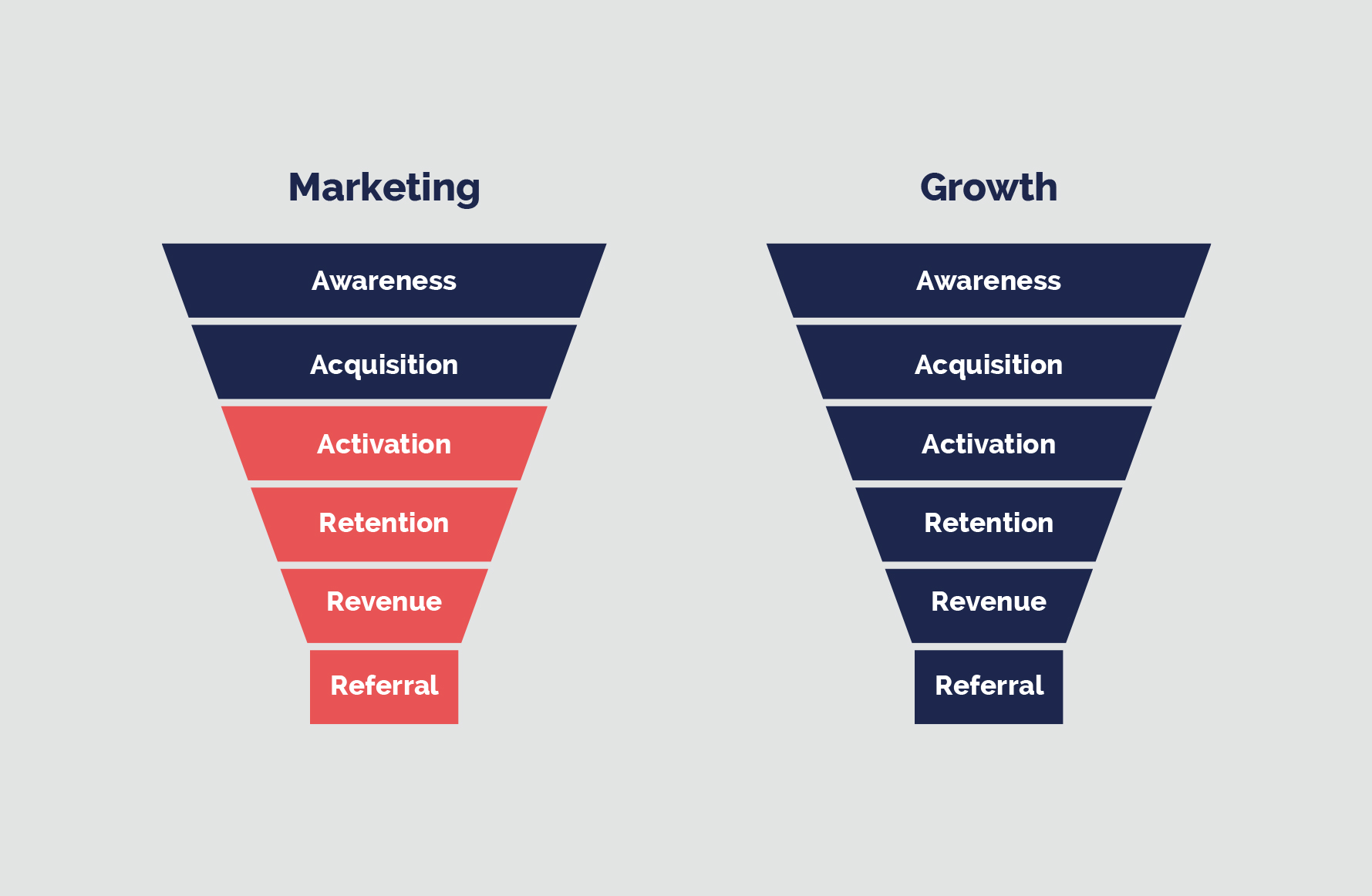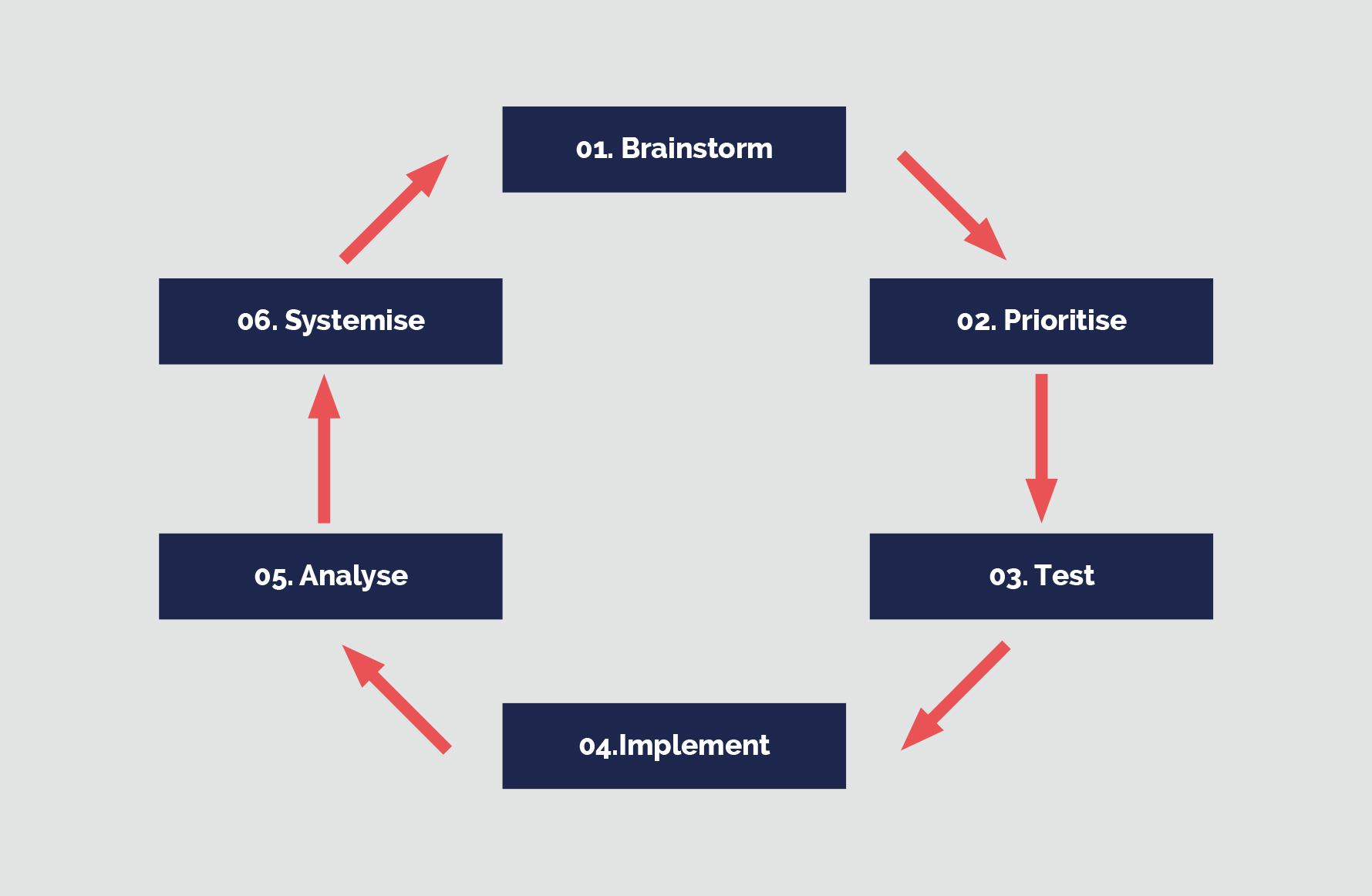Our continuing ‘What the hell is..?’ series sees us turn our attention to Growth Marketing, a marketing methodology that’s gained a passionate following in start-ups and businesses looking to scale.
But while it may have started in Silicon Valley, it’s not just for start-ups. Organisations as large as Coca-Cola and Kimberley Clarke have replaced their CMOs with CGOs (Chief Growth Officers).
You’ll learn how it differs from traditional marketing, how you can incorporate it into your everyday marketing activity and how it may even lead to you rethinking how your marketing function operates.
With a diamond sharp focus on results, it could revolutionise how you approach your campaigns and smash your targets.
So… what the hell is growth marketing?
Growth marketing can be difficult to distil down and define in one, pithy sentence however, we’ll try. Essentially it’s the process of applying a ‘test and learn’ mindset to continually improve marketing performance.
In essence, it’s moving marketing on from forming a strategy and then deciding on the tactics to execute it, to continuously trying many small experiments to constantly improve marketing performance.
These experiments could be A/B testing landing pages, trying different formats of blog posts, data-driven email marketing campaigns, SEO optimisation or creative ad copy – basically testing and analysis of every aspect of a user’s experience to see where improvements can be made.
Data and insights from experiments are then continually fed back into the marketing mix to optimise and improve performance.
Growth marketing vs. traditional marketing
As well as increased focus on data, learning and optimisation, another significant difference between growth marketing and traditional marketing is the activities that are considered ‘up for grabs’.
If we use the traditional AIDA model for marketing, the typical marketing funnel might look like this:

There are four distinct stages that your prospects must flow through from initial awareness of your organisation’s solutions to becoming a paying customer. Broadly, however, they can be summarised as ‘awareness’ and ‘acquisition’:
- Awareness – How do people get to know you?
- Acquisition – How are you converting these people to customers?
If you increase either of these, it’s likely that your business will grow. Marketing teams usually have KPIs that align with these two objectives – brand recall, leads, sign-ups, new users, downloads, etc.
But they’re not the only levers that can be pulled to grow an organisation.
Growth marketing extends the four-stage model
A growth funnel takes a more sophisticated look at the relationship you have with your customers. It goes beyond the AIDA model that finishes when a prospect becomes a paying customer and considers the impact of the experience your customer has when using your product. As a result, growth marketing goes beyond what is traditionally thought of as marketing:

The additional stages can be best explained as:
- Activation – How many of the ‘leads’ you acquire from campaigns actually become paying customers? What can you do to affect this?
- Retention – Was your product or service so good that people decided to come back for more? What can you do to affect this?
- Revenue – How much were users prepared to pay for your product? How can you test this to maximise revenue and profit?
- Referral – Was your product or so good that people decided to tell their friends about it? How can you encourage this behaviour?
Comparing the two funnels:

An organisation’s ‘growth’ can be affected by influencing each, or any layer of the funnel, and the goal of growth marketing is to figure out how these layers interact with each other to deliver the most efficient, sustainable growth.
What growth marketing means for the marketing function
The extended funnel used in growth marketing means that ‘growth’ touches more than just what has been traditionally thought of as marketing. Instead, it is a joint effort of functions across the business – product owners, marketing, analytics, digital and sales.
Depending on the product or service, representatives from each of these departments may need to work together to build and test solutions to user problems that could contribute to growth.
To build, test, learn and optimise throughout the growth funnel therefore requires a new spirit of collaboration between marketing and the rest of the business.
If departments and teams are siloed off from each other and unwilling to collaborate, it will be very difficult to affect the bottom of the growth funnel – retention, revenue and referral.
But if an organisation commits to growth, then a team working together from across an organisation can deliver far more than any one department could achieve on its own. An effective way of encouraging collaboration is to ensure that team member’s objectives throughout the organisation are aligned.
Laser-like focus
One final thing to know about growth marketing is its focus on making changes that will improve one pre-defined metric and one metric only. This is usually the thing that matters most to your business.
Depending on your business, this could be Funds Under Management, new mortgage originations, or monthly recurring revenue for a subscription service.
Often called the ‘north star’ metric in the start-up world, this is the metric that will really make a difference to your business’s bottom line.
Having an agreed ‘north star’ metric brings three benefits:
- It gives your team clarity on what to optimise for
- It holds the team accountable to an outcome
- It communicates the team’s impact and progress to senior management and the rest of the company
Building a growth marketing system
For growth marketing to be effective, it needs to be well-organised, with ideas, hypotheses, tests and results planned and executed as efficiently as possible. A framework helps with this – we like this one from Brian Balfour:

The general process is to develop ideas for things to test, identify which to prioritise, conduct the tests, analyse the results and then keep doing the things that improved performance and build them into your organisation’s standard marketing.
When this process is repeated, even small improvements will compound over time to deliver large results.
What would this look like in real life?
So far, this blog may have felt a little theoretical, so we wanted to give an example of what this could look like. In our example, we’ll be using a mythical ‘round up’ and investing app from a Big 4 bank, similar to Raiz.
This app has the ‘north star’ metric of monthly recurring revenue for the service, which means that all growth marketing and tests would be trying to improve this one metric.
Test that could be run at each stage of the growth funnel could include:
Awareness:
- Test behaviourally-segmented ads through social channels e.g. recent homebuyers, vs. those who follow personal finance media properties.
- Test demographically-targeted ads through social channels e.g. segment by age, gender or metro vs. rural populations.
- Test conservative ‘on brand’ ad creative vs. creative that pushes brand guidelines.
- Test effect of original research into investing trends, promoted through PR.
Acquisition:
- Test allowing users to register using their Facebook log-in details, without the requirement to add any financial details.
- Test the effectiveness of partnerships with financial influencers over three different channels – podcast, blog and Youtube, each sharing a bonus sign-up code which gives users $10 on sign-up.
- Test whether a content funnel with educational content that users must provide an email address to access delivers more sign-ups.
Activation:
- Users who register for the app but don’t deposit any money are called by a service team member to walk them through the process.
- Users who register for the app but don’t deposit any money are prompted via app notifications.
- Users who register for the app but don’t deposit any money are prompted by a 3 part email chain.
Retention:
- Test reduced fees for a longer commitment of time e.g. pay 9 months up front for a full year of service.
- Test different pricing levels for levels of service, allowing users to drop down to a lower fee structure if needed.
- Test gamifying achievements – rewards at one month, one year, at significant milestones etc.
Revenue:
- Test how offering 3 portfolio options vs. 6 portfolio options affects FUM.
- Test charging users a flat monthly fee vs. a percentage of invested assets.
Referral:
- Test referral bonuses e.g. offering users $5 for both the referrer and the referred vs. $10 for just the referrer.
Each of these tests may have a positive impact, or they may fail.
But as the growth team tries more experiments, hypotheses will get better and test results should improve as the team understands what their users need.
if experiments are conducted at each layer of the funnel on an ongoing basis, the snowball effect should deliver outsized gains to the north star metric – monthly recurring revenue.
Five things you can do to try growth marketing
- Think about what your ‘north star’ metric would be. What would be the one metric that you could focus improving that would really make a difference to your business?
- Consider your organisation’s growth funnel, identifying whether there are opportunities to test and improve performance at any of the layers, not just those traditionally associated with marketing.
- Think about what a ‘growth team’ would look like within your business. If you had to run small experiments through the whole growth funnel, who would you need to recruit and get on-side?
- Start running experiments that you can more easily run just within the marketing team. This could be testing the cadence of a welcome email flow to see how it affects engagement, trying 10 different text executions for digital ads instead of just a couple, A/B testing landing pages using Google Optimise, or anything else that you and your team can readily implement and test.
- Keep an open mind! Growth marketing is all about testing assumptions, generating new ideas and being open to try anything to see whether it works.











